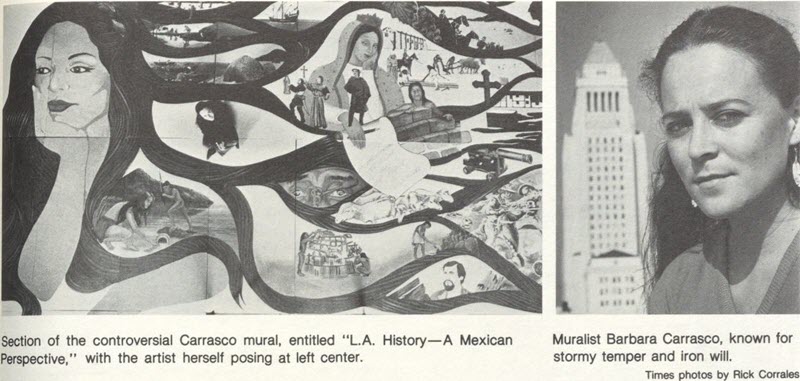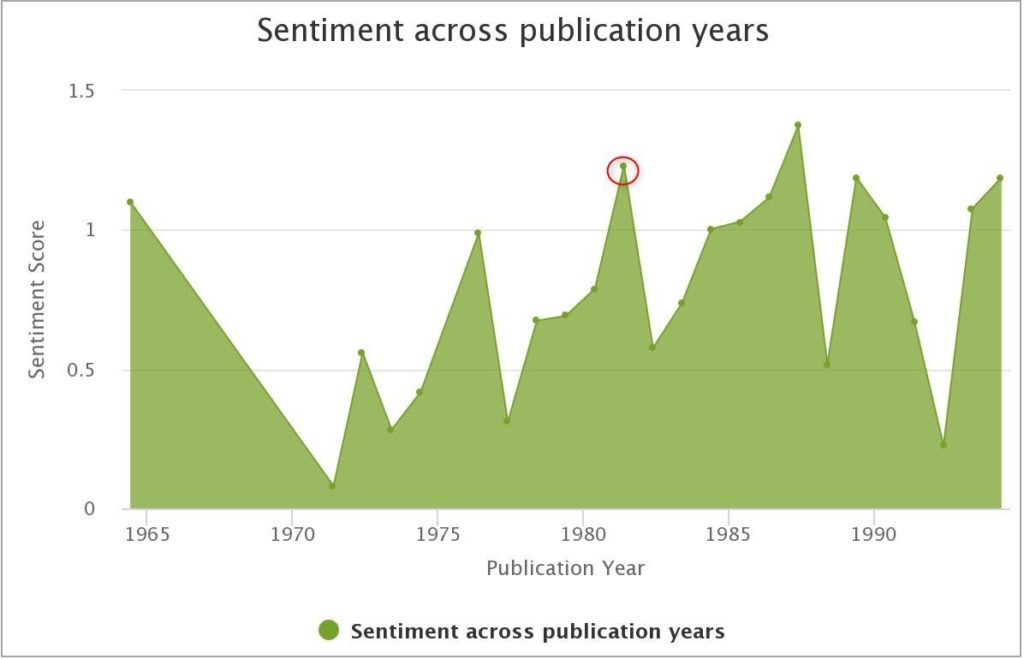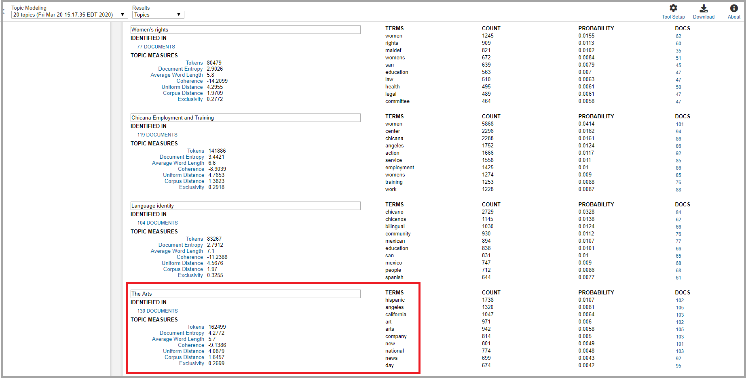| By Wendy Kurtz, Digital Humanities Specialist, Gale |
“Like giant territorial markers, Chicano murals drew physical boundaries around the areas in which Mexicans lived and worked. With their giant images of Guadalupe and Aztec icons, the enormous paintings enveloped barrios and, in a symbolic sense, sheltered them from the outside. They ‘spoke’ Chicano and served as community billboards of pride. They were gigantic reflections of the cultural entity that Chicanos had become. In the tradition of renowned Mexican muralists like Rivera and Siqueiros, their makers were experimenting with a spatial expanse that mainstream artists of the 1970s would not have touched.”
Max Benavidez & Kate Vozoff, “The Wall: Image and Boundary, Chicano Art in the 1970s.”
As a scholar of Spanish literature, my training is rooted in the literary, cultural, and historical underpinnings of the Iberian Peninsula and the Americas. Because of my research background and interest in gender studies, I immediately wanted to explore the second-release Women’s Studies Archive. Voice and Vision—the latest addition to Gale’s Archives of Sexuality and Gender program—provides a diverse, global perspective on women’s history from the 19th and 20th centuries, including increased representation of minority groups and coverage spanning multiple geographic regions, providing a variety of perspectives on women’s experiences and impact on society across the world.
Specifically, Voice and Vision features three collections that focus on Latinx women and Chicana activism. The Comisión Femenil Mexicana Nacional Archives, the National Network of Hispanic Women archives, and the Alicia Escalante Papers move the focus away from Western activism, showcasing the voices of women from diverse ethnic backgrounds and expanding traditional perspectives. The inclusion of material on Chicana leaders and activists supports Latinx communities and allows researchers to explore narratives and perspectives that have previously been underrepresented.
As an extension of the Mexican American civil rights movement, the Chicano movement sought the empowerment of the Mexican American community in the United States. Also known as “El Movimiento,” the 1960s‒1990s saw a rise in the political and social activism for the Mexican American community. The term Chicana was adopted by Mexican American women who wanted to establish social, cultural, and political identities in the United States. The Chican@ movement made possible new literary and artistic representations of the Mexican American and Chicano/a experiences in the United States as seen in film, music, and the visual arts. One such unique art form was muralism, which became a core medium for the expression of political and social experiences for male and female artists in the ‘70s and ‘80s as Chicana art collectives and centers emerged.
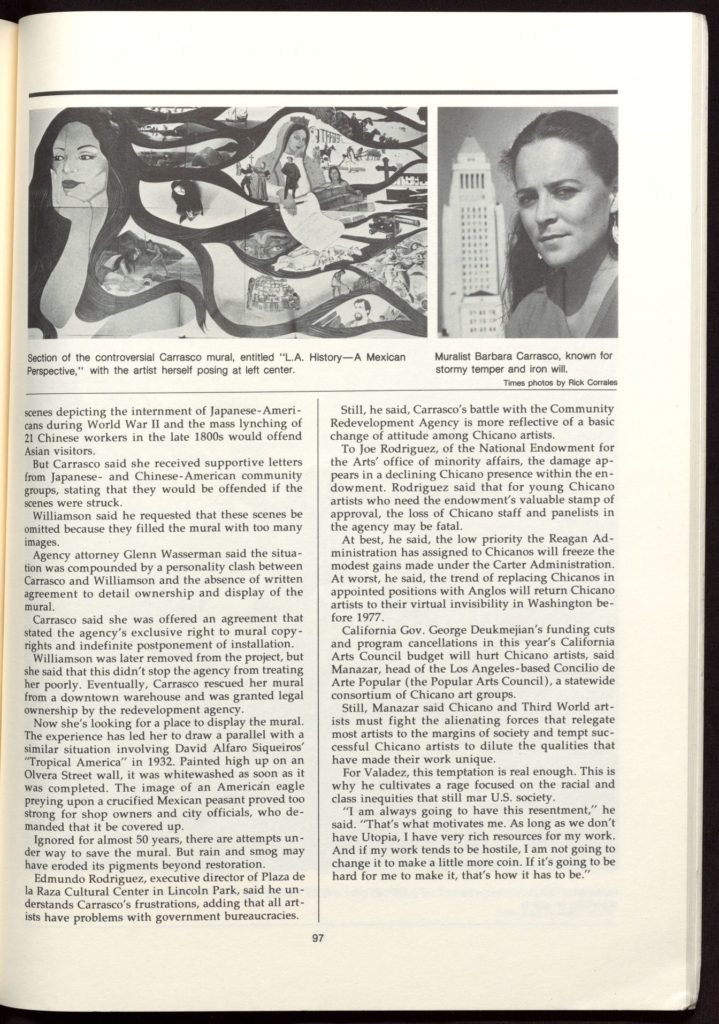 External, George Ramos and Frank Sotomayor. Southern California’s Latino Community: A Series of Articles Reprinted from the Los Angeles Times, 1983. TS National Network of Hispanic Women Archives: Series II: Publications Box 90, Folder [U5]. University of California, Santa Barbara. Women’s Studies Archive. https://link.gale.com/apps/doc/LJJLKB099455552/WMNS?u=gale&sid=WMNS&xid=74868156, page 100.
External, George Ramos and Frank Sotomayor. Southern California’s Latino Community: A Series of Articles Reprinted from the Los Angeles Times, 1983. TS National Network of Hispanic Women Archives: Series II: Publications Box 90, Folder [U5]. University of California, Santa Barbara. Women’s Studies Archive. https://link.gale.com/apps/doc/LJJLKB099455552/WMNS?u=gale&sid=WMNS&xid=74868156, page 100. Because of the unique nature of the Chicana and Latinx titles available in Voice and Vision, I wanted to use computational text analysis to explore how muralism and murals were represented in the writings, proceedings, and articles. Since the introduction of the Gale Digital Scholar Lab, users of Gale Primary Sources collections can create and analyze custom content sets to visualize answers to key research questions, helping us unlock the rich value of these unique primary sources.
Building the Dataset
I searched the three aforementioned Latinx and Chicana publications released within Voice and Vision for uses of the keyword mural: I received 165 results based off of my search; and after reviewing the results, added 161 of the 165 documents to my content set. I used two text- mining analysis methods to examine the content set I created: sentiment analysis and topic modeling.
Challenges and Cleaning Configurations
One challenge I faced in working with the Latinx and Chicana texts was that many times they published content in both Spanish and English within the same publication. The bilingualism, while typical of these texts, can be a challenge when applying computational methods to analyze content, because many of the algorithms are trained and modeled on one language. In the case of the Lab, the analysis methods are trained in English. To overcome this multilingual hurdle, I relied on my text-cleaning configurations. I employed stop words lists in both English and Spanish to ignore the most common words in both languages instead of only applying an English stop words list. I used the Spanish starter list available in the Lab, which comes from the open-source repository in GitHub. Once I created my cleaning configurations, I was ready to begin analysis and visualization.
Sentiment Analysis
Although there tends to be a negative comparison of muralism to graffiti, the muralism art form dates back to the 1920s and the Mexican muralist masters Diego Rivera, José Clemente Orozco, and David Alfaro Siqueiros. If we look at the results from sentiment analysis in the Lab, we can see an overwhelmingly positive association of muralism for the Chicana and Latinx communities represented in the texts. There’s a steady upward trajectory from the mid-1960s to the turn of the 21st century.
Zooming in on one of the highest points in 1981 reveals a series of writings about muralist and renowned artist Judith Hernández. Hernández is a Los Angeles–based artist whose career began as a founding member of the Chicano art and Los Angeles mural movements (see figure 1). Another document reveals information about the Chicana Service Action Center and their support of the mural program (see figure 2).
CFMN Board of Directors Meeting, January 17, 1981. MS Comisión Femenil Mexicana Nacional Archives: Series I: CFMN Administrative Records Box 4, Folder 11. University of California, Santa Barbara. Women’s Studies Archive. https://link.gale.com/apps/doc/ZREPQZ805902819/WMNS?u=gale&sid=WMNS&xid=8edfdc0d, page 80.

CFMN Board of Directors Meeting, January 17, 1981. MS Comisión Femenil Mexicana Nacional Archives: Series I: CFMN Administrative Records Box 4, Folder 11. University of California, Santa Barbara. Women’s Studies Archive. https://link.gale.com/apps/doc/ZREPQZ805902819/WMNS?u=gale&sid=WMNS&xid=8edfdc0d, page 82.
Topic Modeling
Topic modeling gives us an overview of the various topics that are discussed alongside my main question about muralism for the Chican@ and Latinx communities. These topics range from language identity politics, racial discrimination, the Chicano movement, and women’s rights to discussions on education for women and girls, employment and training services, and the arts.
I identified one topic related to the arts in my content set, and we can see 139 of the 161 documents represented in the topic. We can dig into the primary sources to see how muralism fits into discussion of the arts. I found correspondence from Pacific Bell in 1984 to Sylvia Castillo, the founder of the National Network of Hispanic Women. Pacific Bell wrote that they were “so impressed with the cultural richness of The Social and Public Arts Resource Center’s (SPARC) Mural Archive that we helped them develop this calendar to give more people the opportunity to enjoy this celebration of our Hispanic heritage” (see figure 3). The creation of the calendar by a telecommunications company demonstrates how the impact of Chicano murals extended beyond the Chicano and Chicana community (see figure 4).
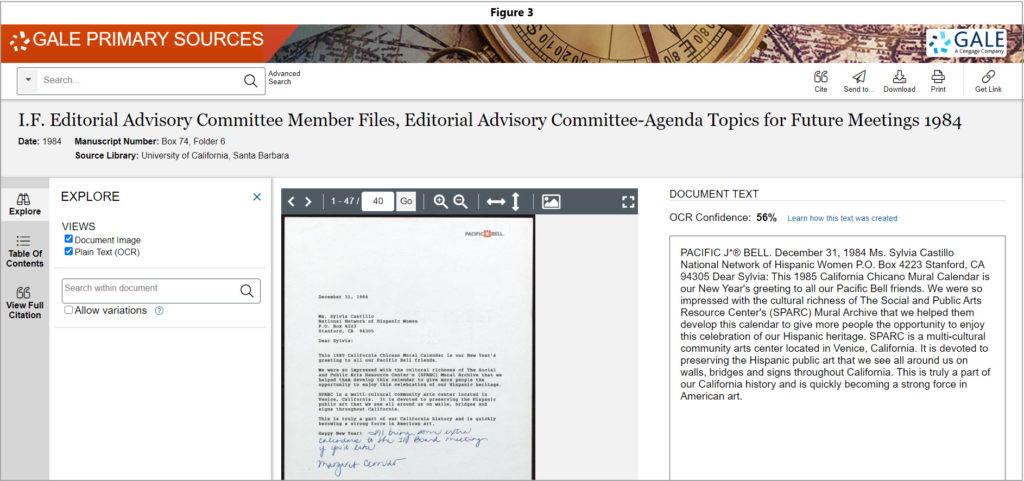
I.F. Editorial Advisory Committee Member Files, Editorial Advisory Committee Agenda Topics for Future Meetings 1984 MS National Network of Hispanic Women Archives: Series I: Administrative Files Box 74, Folder 6. University of California, Santa Barbara. Women’s Studies Archive. https://link.gale.com/apps/doc/CMLIUD337569527/GDCS?u=gale&sid=GDCS&xid=b9208ef0 , page 40.
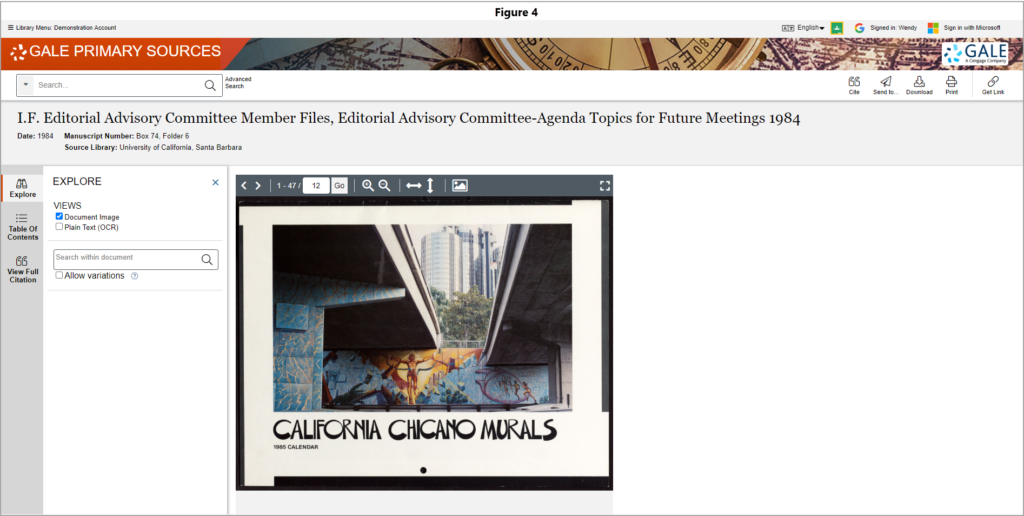
I.F. Editorial Advisory Committee Member Files, Editorial Advisory Committee, Agenda Topics for Future Meetings, 1984. MS National Network of Hispanic Women Archives: Series I: Administrative Files Box 74, Folder 6. University of California, Santa Barbara. Women’s Studies Archive. https://link.gale.com/apps/doc/CMLIUD337569527/DSLAB?u=omni&sid=DSLAB&xid=da740fcf.
For more insights, watch the video on this project.
Nike
